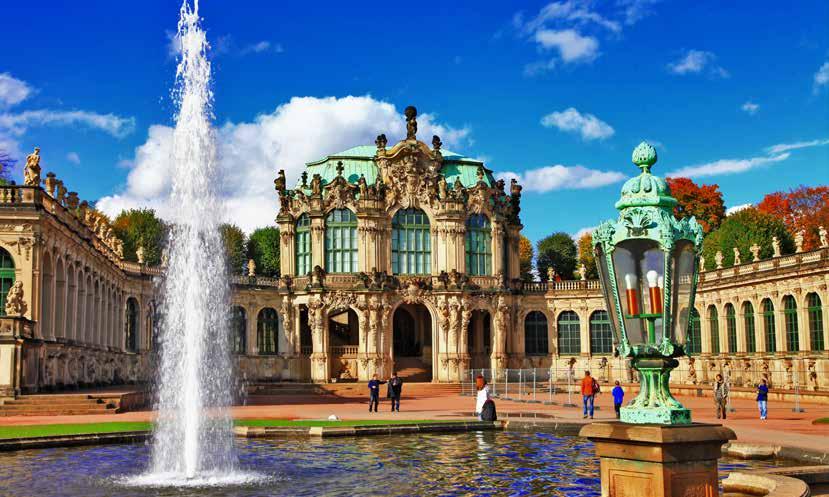
2 minute read
Country Facts



GERMANY
Fairytale castles like Neuschwanstein, Oktoberfest with its famous beer tradition, the Black Forest with its iconic clocks, fascinating cities like Berlin, Munich or Dresden – these are just a few highlights of Germany known all around the world! Plenty of architectural highlights, mind-blowing museums, historic monuments, the traditional cuisine, medevil towns as well as buzzling metropoles only wait to be discovered! Besides the wide variety of cultural possibilities Germany has to offer, the country is blessed with a range of awe-inspiring landscapes: From breath-taking coastal trails in the north to snowy mountain peaks in the south, as well as enchanting lakes and lush forests – it’s a paradise for those looking for active holidays, as well as for the relaxation-seeking traveller. High standards of hospitality services, as well as transport links make it easy to get around.


GERMANY
COUNTRY
Germany is a populous country with more than 83 million people living in an area of 357,581 square kilometres. It is located in the heart of Europe and borders nine countries. Germany accommodates diverse landscapes, cities and villages, two seas, plenty of mountains, rivers and lakes. Germany is one of the most important industrialized countries in the world. Among the four cities with millions of inhabitants are Berlin, Hamburg, Munich and Cologne.
THE MAJOR CITIES
Being the capital of Germany, Berlin is the largest city with more 3.6 million inhabitants. The city offers a huge range of historical monuments, like the Brandenburger Tor. Munich is considered an olympia and sports city. Economically it is one of the fastest growing cities in Europe and also one of the most important financial centres in Germany. The Port of Hamburg functions as a gateway to the world with its largest ports in Europe. Other landmarks of this second biggest german city are the Speicherstadt and the internationally known Elbphilharmonie.
WEATHER
Germany has a temperate climate. In the North summers are pleasantly warm and winters not too cold. Further south and east, the temperature differences between the seasons are sometimes significantly greater. From June to September, Germany is at its warmest, with monthly average temperatures of 21 to 25 degrees. The lowest temperatures are measured in January. Most rainy days are found in winter, but even in summer there can be frequent showers.
JUN–AUG SEP–NOV DEZ–FEB MAR–MAY BERLIN 19,5 5,6 2,2 8,2 HAMBURG 18,1 8 2 9,1 MUNICH 18 8,5 0,5 4
PEOPLE
Identifying a typical german character is impossible due to the country’s wide regional diversity. People are often considered efficient and disciplined, traditional and well-organized. Germany is a multicultural society that peacefully reconciles different nationalities, languages, religions and ethnicities with its own culture and language. The country also has a variety of German dialects that change from state to state.








